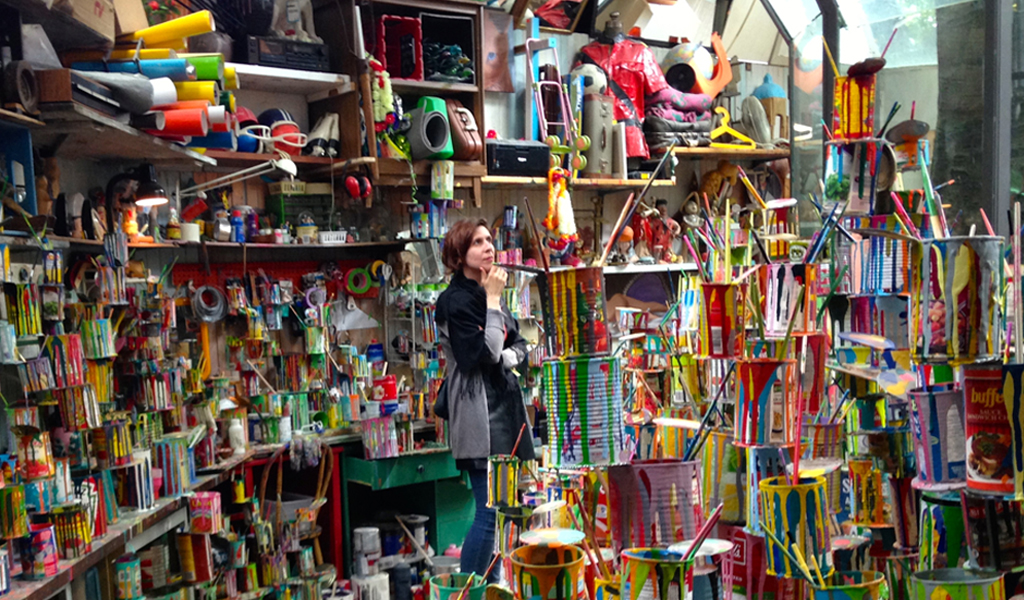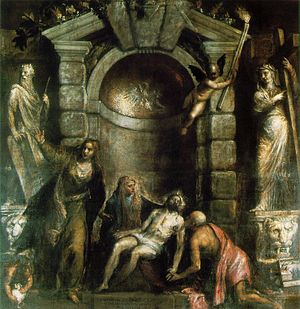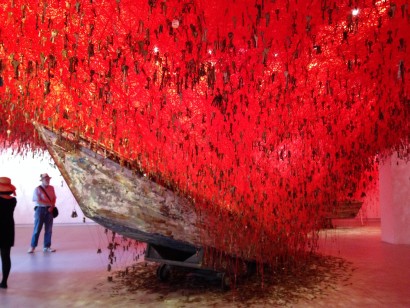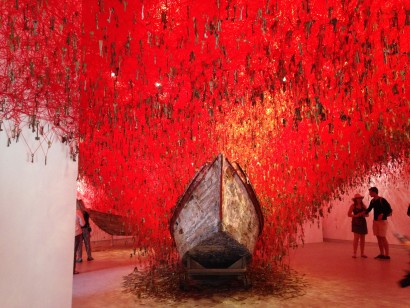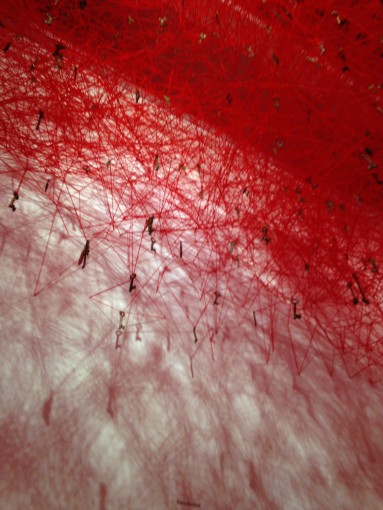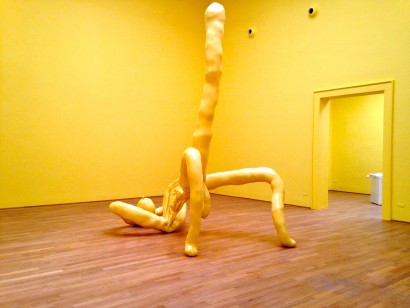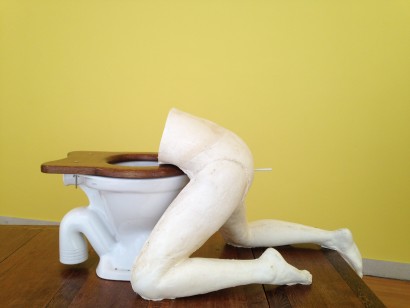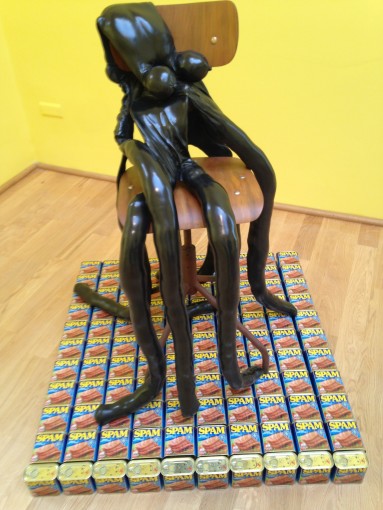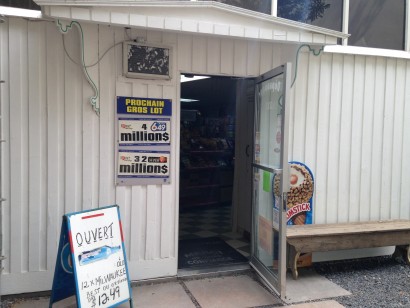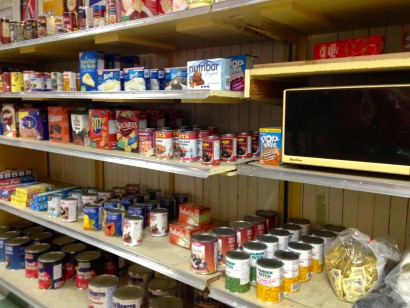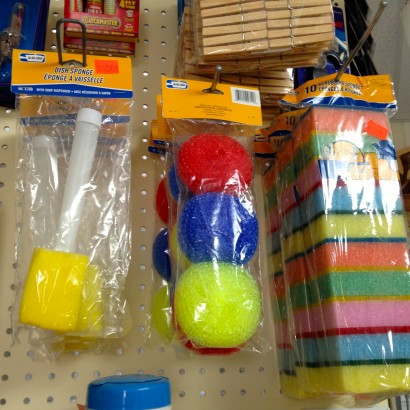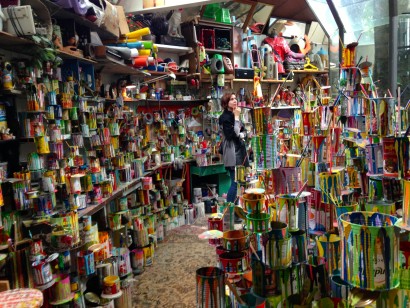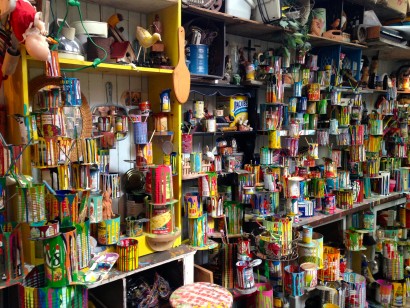‘Giardini’ is ‘Garden’ in English. The Venice giardini is an area of parkland which hosts the Venice Art Biennale. The garden contains 30 permanent pavilions. Each of them is allocated to a particular nation and displays works of art representing the by its nationals during the Biennale. In additional to these national pavilion is the Central Pavilion, which was called the Italy Pavilion before 2009.
Here are some general views of Giardini: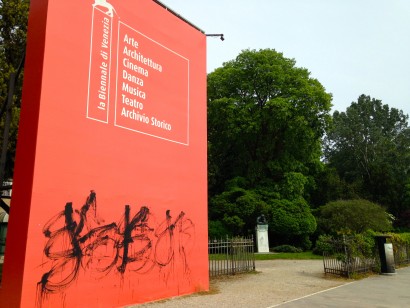
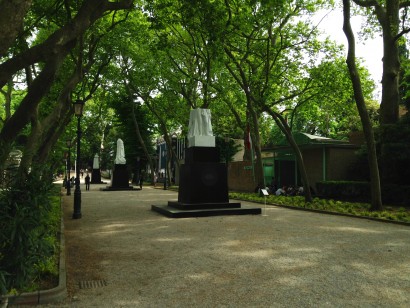
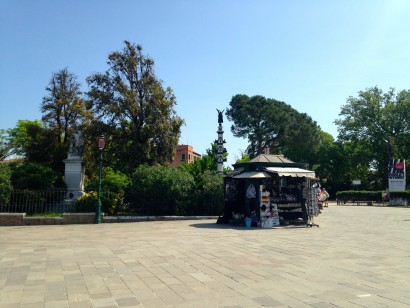
Curated by Okwui Enwezor, All the World’s Future is the exhibition that is held within the Central Pavilion.
The Entrance of the Central Pavilion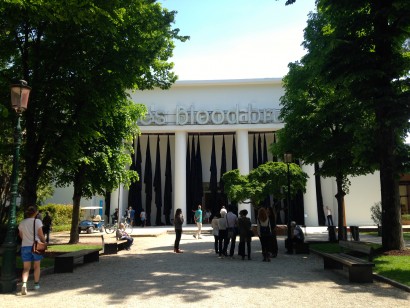 Artwork in this picture:
Artwork in this picture:
Glenn Ligon, A Small Band, 2015 and Oscar Murillo, Signalling devices now in bastard territory, 2015
Inside: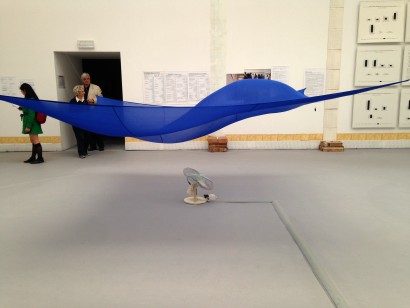 Hans Haacke, Blue Sail ,1964-1965
Hans Haacke, Blue Sail ,1964-1965
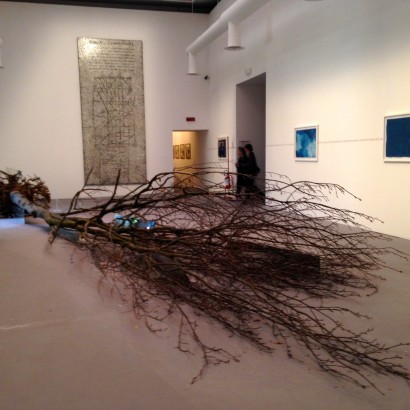 Robert Smithson, Dead Tree, 1969
Robert Smithson, Dead Tree, 1969
I personally think the exhibition is no lighthearted matter.
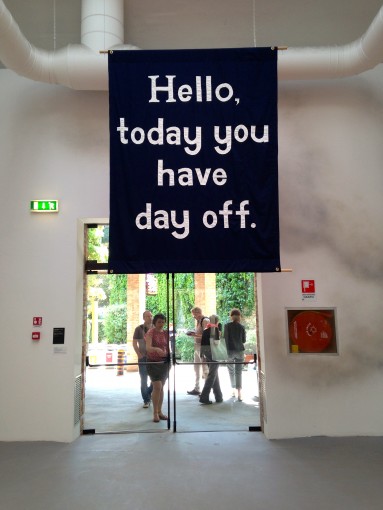
Jeremy Deller, Hello, Today you have a day off , 2013
The slogan on Deller’s banner voices out a line that we would probably all love to hear, but will never hear from our boss. However you may not find it as funny as it looks when you learn about the context of the work. It is set against a text message sent to workers on zero-hour contracts that reads: “Hello, today you have day off.” Zero-hour contract is the name given to a type of contract, where the employer has the discretion to vary the employee’s working hours, usually anywhere from full-time to “zero hours”. Such practice may be ideal for students or retirees but it at the same time means unstable income and unpredictable hours for the general working population.
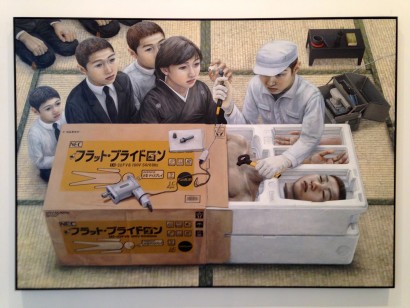 Tetsuya Ishida, Recalled ,1998
Tetsuya Ishida, Recalled ,1998
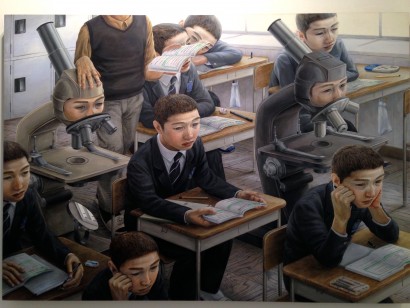 Tetsuya Ishida, Awakening, 1998
Tetsuya Ishida, Awakening, 1998
Tetsuya Ishida was a Japanese artist who is best known for his surreal portrayal of a mundane Japanese life. They convey themes like anxiety, isolation and identity crisis. Ordinary school boys, business men as a part of the factory are usually portrayed. Sometimes they are seen to be physically integrated with everyday household objects. The artist died in 2005 when he was struck by a train at a level crossing.
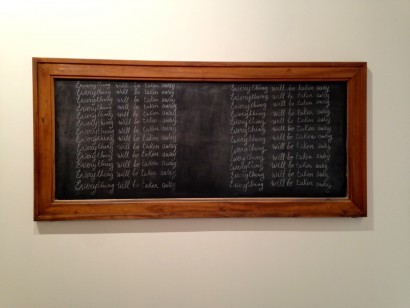 Adrian Piper, Everything will be taken away #21, 2010-13
Adrian Piper, Everything will be taken away #21, 2010-13
The artist Adrian Piper is the recipient of the Gold Lion Award of this year’s Venice Biennale. This repetition of an ominous prediction inscribed on a blackboard is subject to our own interpretation.
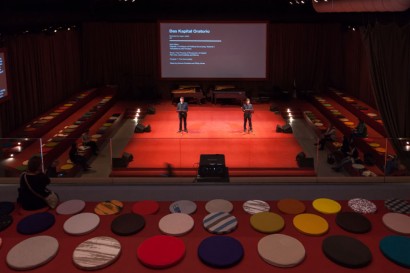 View of the ARENA
View of the ARENA
Photo courtesy: Inexhibit
Designed by architect David Adjaye, the AREANA is a space inside the Central Pavilion. Over the course of the exhibition, artists, composers, actors, students, members of the public have been invited to contribute to the program of reading and performances.
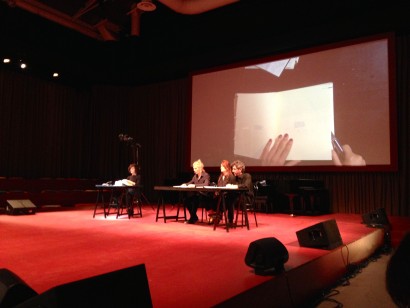 Joan Hadjithomas and Khalil Joreige, Latent Images: Diary of a Photographer, 2009-2015
Joan Hadjithomas and Khalil Joreige, Latent Images: Diary of a Photographer, 2009-2015
During my visit, the reading of the artist book Latent Images: Diary of a Photographer was presented. The book is based on hundreds of reels of film originally exposed, but until now never developed, by the Lebanese photographer Abdallah Farah between 1997 and 2006. Farah’s work bears witness to postwar Beruit, relaying political, social, personal and everyday events over almost a decade.
Enough of the Central Pavilion for now, let’s look at some of the national pavilions.
Dutch Pavilion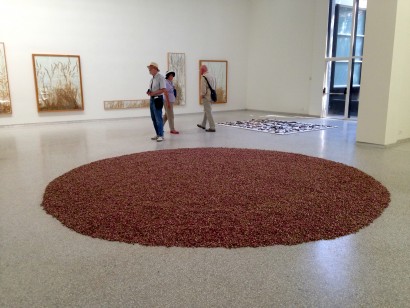 View of the exhibition to be all ways to be, a solo exhibition of Herman de Vries
View of the exhibition to be all ways to be, a solo exhibition of Herman de Vries
The work of Herman de Vries focuses on natural processes and phenomenon, presented by him as the primary, physical reality in which human existence is rooted. The circular mass you see in the above picture is formed by 108 pounds of dried rose. You can even smell their scent in the room.
Nordic Pavilion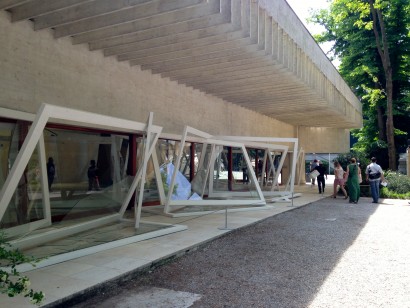
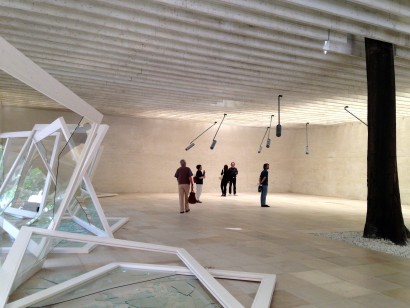
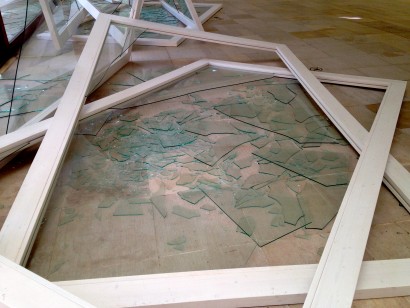
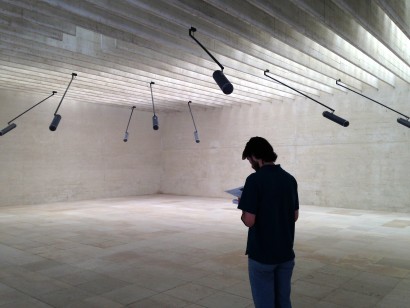 View of the exhibition Rapture, a project by Camille Norment
View of the exhibition Rapture, a project by Camille Norment
This is a site-specific, sculptural and sonic installation, for which the artist has composed new music on the glass armonica, a 18th-century instrument that creates ethereal music from glass and water. Sound is emitted from the microphone-like speakers suspended from the ceiling.
In contemporary context, Norment explores the tensions this kind of music raised today by creating a multi-sensory space, which reflects upon the history of sound, contemporary concepts of harmony and dissonance, and the water, glass and light of Venice.
Danish Pavilion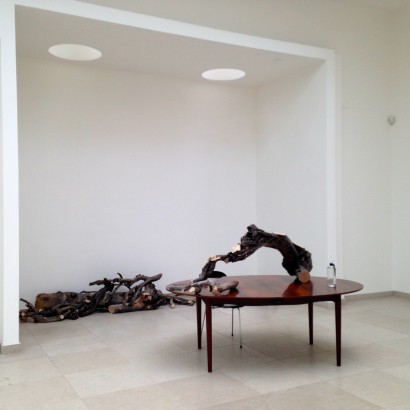
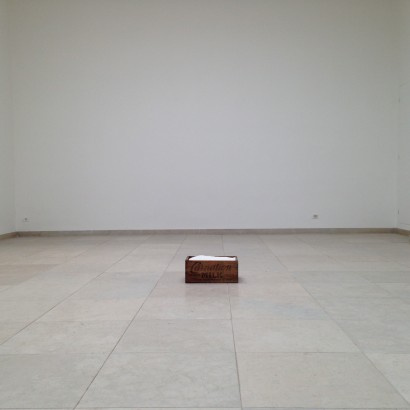
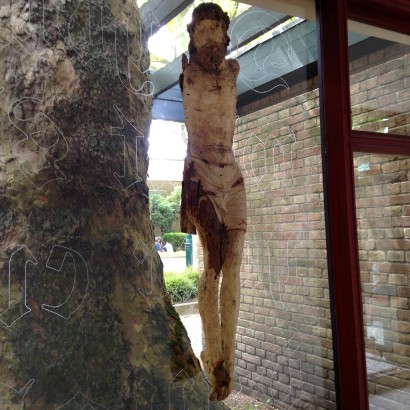
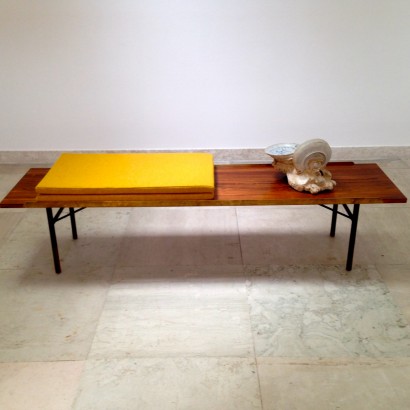 View of the exhibition Mothertongue, a solo exhibition by Danh Vō.
View of the exhibition Mothertongue, a solo exhibition by Danh Vō.
Vō was born in Vietnam. When he was 4 years old, his family fled the country in a homemade boat and settled in Denmark. It can be said that he is representing his adopted homeland in this year’s biennale.
The exhibition is inspired by Titian’s 1576 Pietà, the Venetian’s last, and one of his most somber paintings. The painting is now in Gallerie dell’Accademia, Venice.
Some may find the exhibition a bit “too clean”, but still I think it is an interesting conversation between the old master and the contemporary artist. I am also looking forward to visiting the exhibition curated by Vō at François Pinault Foundation’s Punta della Dogana.
View of the exhibition The Key in the hand, an installation by Chiharu Shiota
These photos just do not do the work justice! The very beautiful Japanese Pavilion features one large-scale installation created by Chiharu Shiota. She stretches yarn across the exhibition space, and produces works out of materials that are filled with memories and traces of everyday life such as dresses, beds, shoes, and suitcases. Tens of thousands of keys are collected from people across the globe – they are a recollection of memories, and at the same time symbolise things that we value and are familiar with.
Korean Pavilion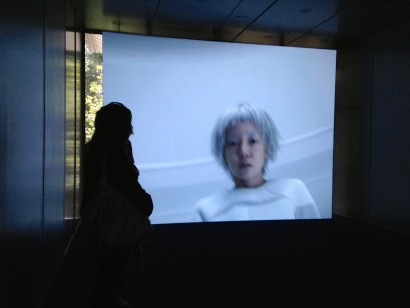
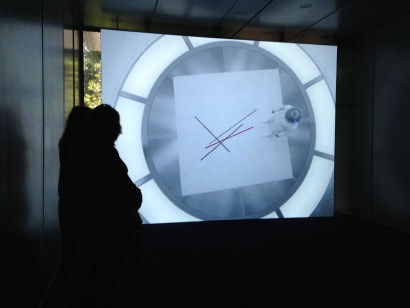 View of the exhibition The Ways of Folding Space & Flying, a project by Moon Kyungwon and Jeon Joonho
View of the exhibition The Ways of Folding Space & Flying, a project by Moon Kyungwon and Jeon Joonho
A futuristic-looking exhibition with a cute brochure (which is always a plus)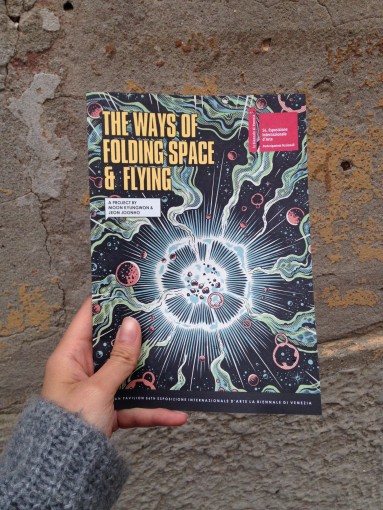
View of the exhibition I Scream Daddio, a solo exhibition by Sarah Lucas
Yes, the exhibition is very yellow, creamy custard yellow. Minion yellow.
I would say it stands out from the Biennale because it is kind of bawdy in a fun and humorous way. The text in the brochure is also unconventional.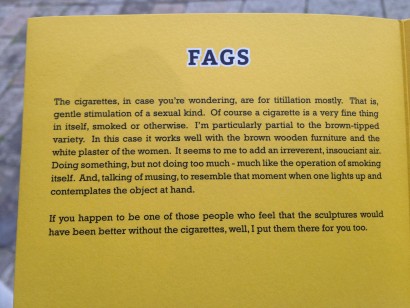
Canada Pavilion
The outside of the Canada Pavilion looks like a structure under construction with scaffoldings. I missed it at first as well since the scaffolding obscures a large area of the building’s façade.
This is the entrance of the pavilion in disguise as a small neighbourhood convenience store. It looks so real that people from other pavilions actually went into the store hoping to buy something only to find out that it’s part of an artwork.
Passing through the store you will find yourself in a space that resembles an artist studio. It is crowded with countless objects of all kinds with stacks of paint cans covered in drips of paints.
After that a staircase will lead you from this section to the scaffolding which is covered by a terrace that extends from the pavilion and overlooks the Giardini. Viewers are then invited to drop coins into a metallic maze-like gutter.
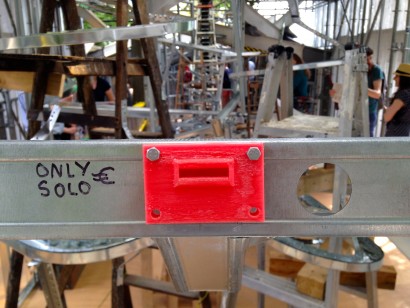 The coins will eventually end up in the wall
The coins will eventually end up in the wall
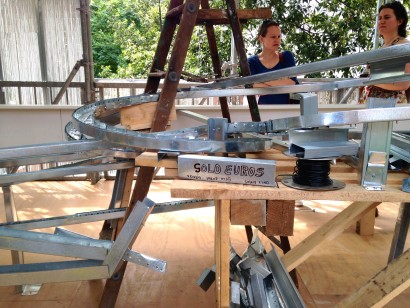
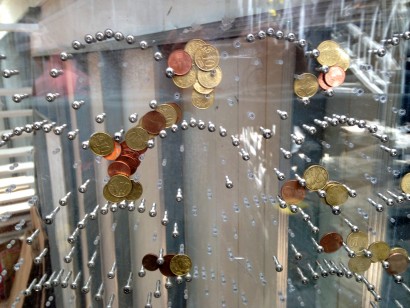 View of the exhibition Canadassimo, an installation by BGL
View of the exhibition Canadassimo, an installation by BGL
This is only half of the Biennale – will go visit the Arsenale next week. Until then!


